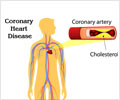
In fact, one study found that among 3,700 children and young adults, ages 7 to 22, who were evaluated for chest pain in the outpatient clinics at Boston Children's from 2000 to 2009, only 1 percent were found to have a cardiac cause.1 The researchers also found that the patient testing involved with those visits was quite disparate—from extensive to minimal.
"Based on these findings, we recognized the opportunity to decrease practice variation through the design of a SCAMP," Fulton says. "At the inception of this process, we thought it important to include other pediatric cardiologists from the New England region to see if the SCAMP was scalable and exportable enough to be successfully deployed across clinical groups of varied sizes."
In this study, the physicians assessed 1,016 ambulatory patients, ages 7 to 21 years, initially seen for chest pain at Boston Children's Hospital or a practice within the New England Congenital Cardiology Association (NECCA).
They developed a SCAMP algorithm for pediatric chest pain using history, physical exam and electrocardiogram (ECG) to suggest when further diagnostic testing was indicated. Without the use of the SCAMP algorithm, practices frequently ordered expensive tests, such as echocardiograms, exercise stress tests, Holter monitors and event monitors—with disparate utilization depending on the unique practice or physician.
This algorithm was designed to identify cardiac causes of chest pain while effectively using resources in the outpatient cardiology clinic setting. The algorithm was used to analyze the combined patient population and to compare outcomes of those seen at BCH and NECCA sites.
Advertisement
This study brings to light an important point about practicing medicine today, states the study's lead author Gerald H. Angoff, MD, MBA, associate medical director for quality improvement at Dartmouth-Hitchcock, Manchester, N.H. "Clinical guidelines, while informative, are not always practical, because they fail to consider sustainable adoption by practicing physicians. The study underscores the value of SCAMPs, which through iterative analysis of the data, produces a guideline that busy practicing physicians across a diverse geographical region will more likely adopt and use to treat a biologically variable patient population."
Advertisement
Importantly, the study also found that the pattern of care for the NECCA practices and Boston Children's differed minimally.
"The willingness for collaboration for this study across New England facilities represents the collective responsibility among today's physicians to reduce testing and health care costs, when appropriate, while improving the quality of care delivery" Fulton says.
Source-Eurekalert














